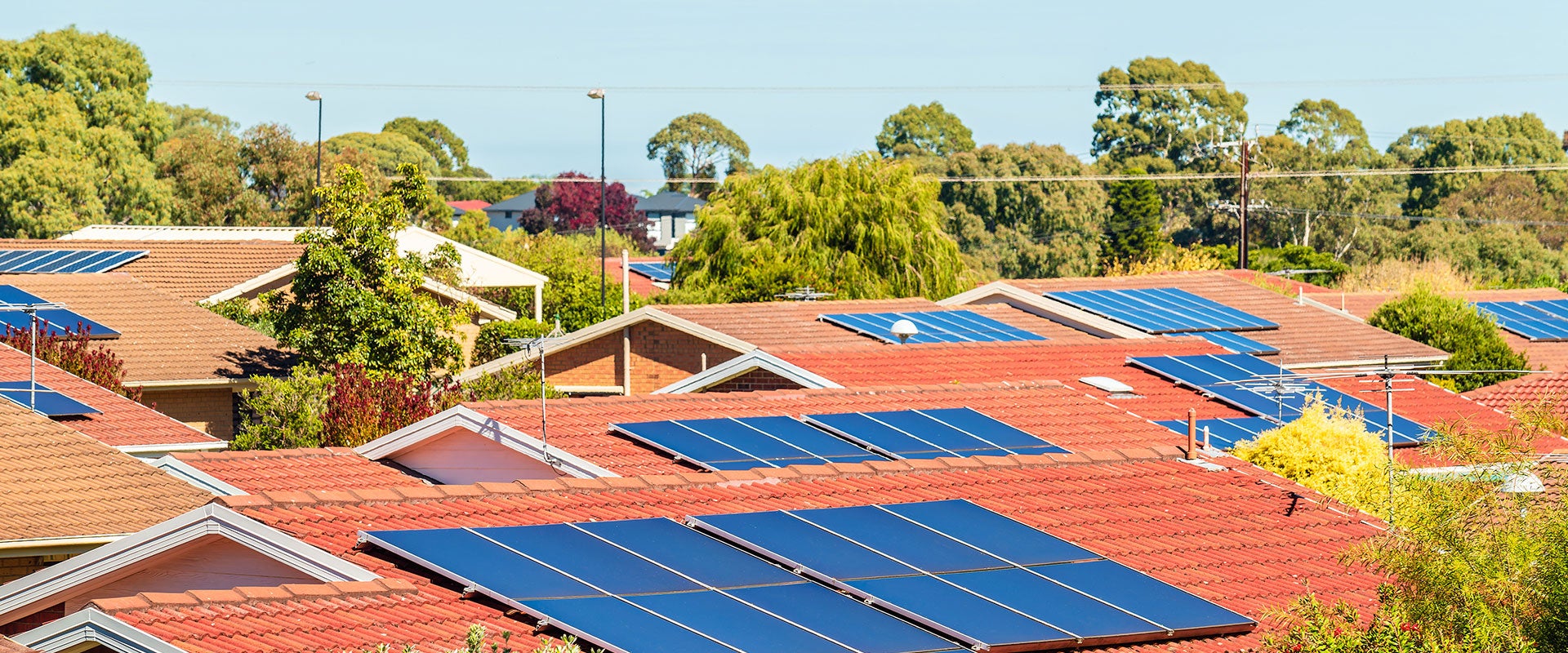
The Opportunity for Distribution Networks in Delivering the Energy Transition
- Article

Australia’s move to decarbonise electricity generation — federal and state governments are targeting aggressive growth in renewable generation capacity, from less than 50% in 2020 to more than 80% in 2030 — requires the development of more than 30 GW of utility-scale renewable generation and storage (under current largely centralised plans). It moreover requires new transmission infrastructure to connect such generation to the wider network.
But as things stand, the planned utility-scale buildout will almost certainly be delayed.
That’s because the transition timeline requires a doubling of the renewable build rate, which will strain workforce availability, logistics, and international supply chains. Indeed, existing large-scale energy projects have suffered from cost increases and scheduling delays, and are increasingly being met with community opposition due to their impact on local amenities.
Other barriers to achieving this timeline include the investment costs, which are very large and, based on the learnings gleaned from other large infrastructure projects, are likely to increase as projects are better defined. There are also increasing challenges around social license, particularly when it comes to new transmission, which is also likely to delay execution and/or increase costs.
A delay to the buildout would mean the operation of coal-fired generators would need to be extended. New South Wales, with its planned closure of the Eraring power station in 2025, and Victoria, with its planned closure of the Yallourn power station in 2028, are most at risk. And while there is a sufficient pipeline of renewable projects to backfill these closures, time is of the essence. A delay to project delivery in NSW of just one year would see generation capacity fall short of requirements in 2026.
All of that said, mitigating such potential delays in utility-scale buildout could be achieved by accelerating the uptake of rooftop solar in the distribution network, complimented by distributed batteries.
Australia already leads the world in the uptake of rooftop solar photovoltaics (PV) due to high-quality solar resources, government subsidies that offset upfront costs, and the resulting attractive economics. And based on Australia’s detached housing stock and ownership rates, the Commonwealth Scientific and Industrial Research Organisation (CSIRO) estimates that penetration can reach close to 60%.
The Australian Energy Market Operator’s (AEMO’s) Integrated System Plan, or ISP, Step Change scenario has rooftop solar penetration reaching 45% of households by 2030 and 51% by 2040.
L.E.K. Consulting, however, has come up with an accelerated rooftop solar scenario which would see that 51% penetration brought forward to 2030. This scenario would deliver an incremental 5.2 GW of generation capacity in 2030. While an acceleration from AEMO's Step Change scenario, it requires annual capacity additions below the level achieved in 2020/21 - in other words, within historical execution capacity.
To support this incremental solar capacity and manage the impact to minimum demand, 2.7 GW of distributed battery storage would also need to be added to the network.
Delivering this incremental rooftop solar and storage would cost an estimated $5.8 billion. Not only does this cost estimate compare favourably to utility-scale generation projects, its execution risk is lower. It is also readily implementable. More detailed and localised analysis would generate even tighter quantification, but at a screening level it represents an attractive opportunity for governments to mitigate the risks of delivering on their energy transition ambitions.
Additional rooftop solar PV uptake could be achieved through increased government subsidies or other incentives to offset the upfront installation cost and decrease the payback time frame. Programs such as Victoria’s Solar Homes, for example, have supported accelerated uptake since 2018 and could be expanded by way of broader eligibility or higher subsidies.
Fully leveraging distribution networks clearly presents an attractive way to support the energy transition. To accelerate those benefits, however, industry members — from Distributed Network Service Providers to regulators to policymakers — would need to work together, and quickly.
To learn more about the distribution network opportunity in Australia, be sure to download our analysis.